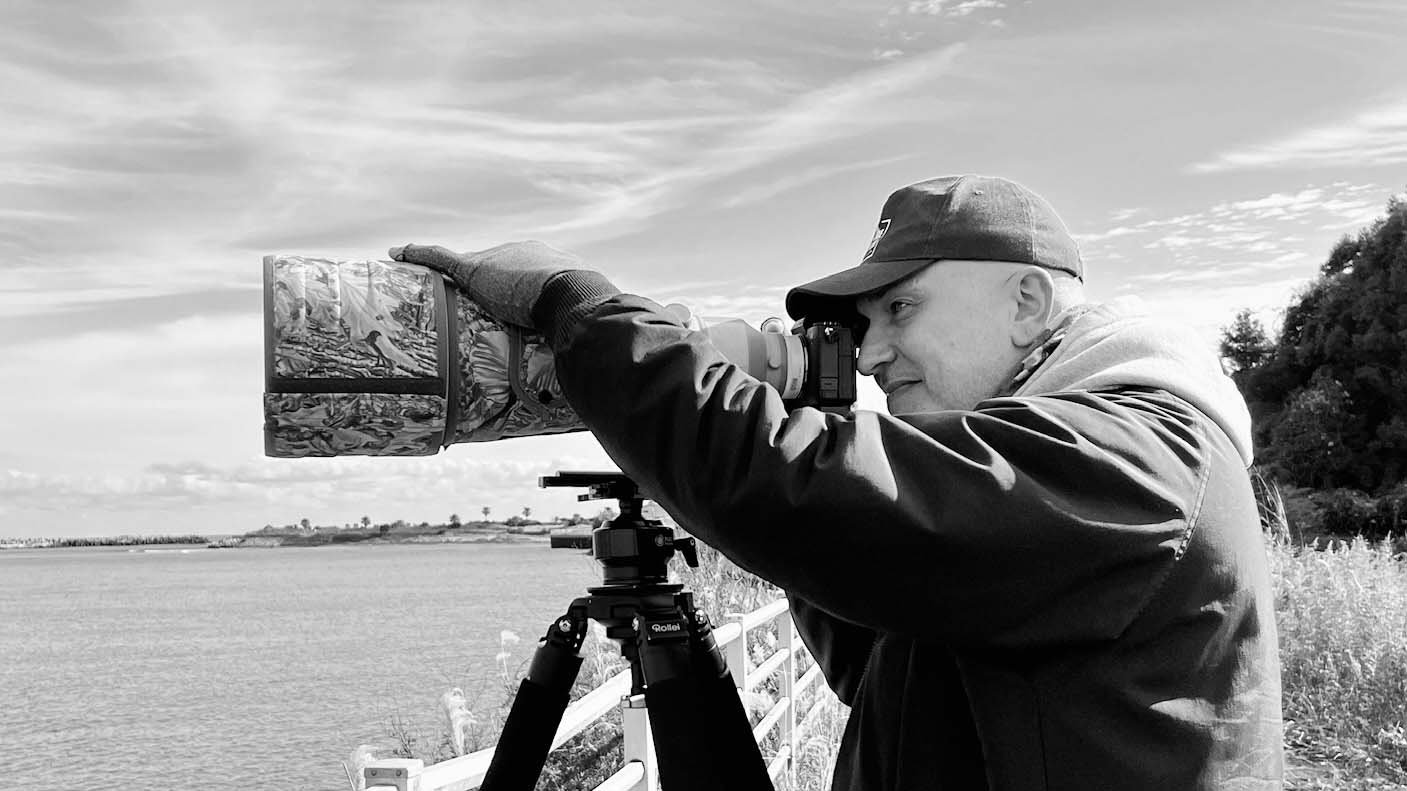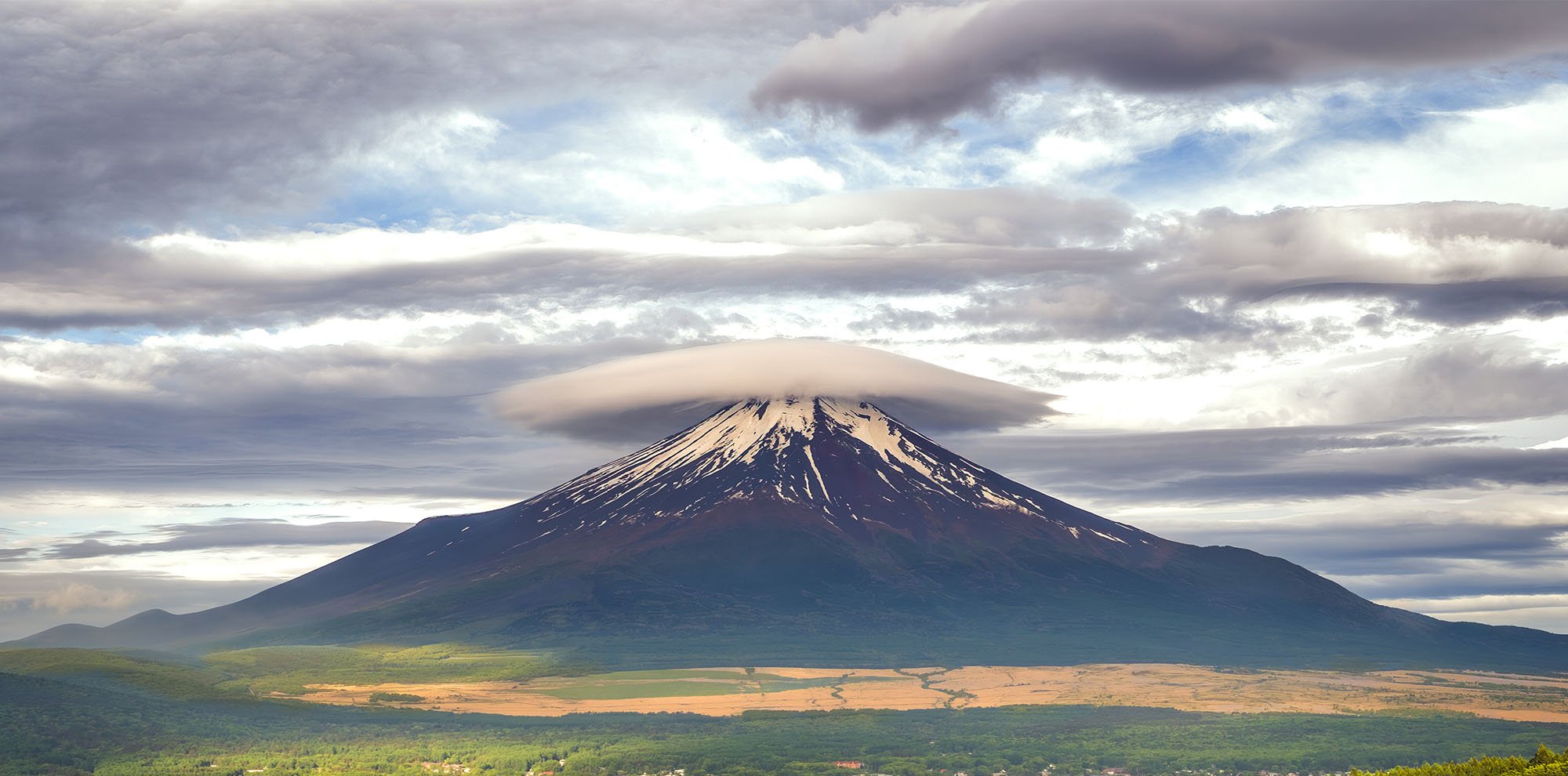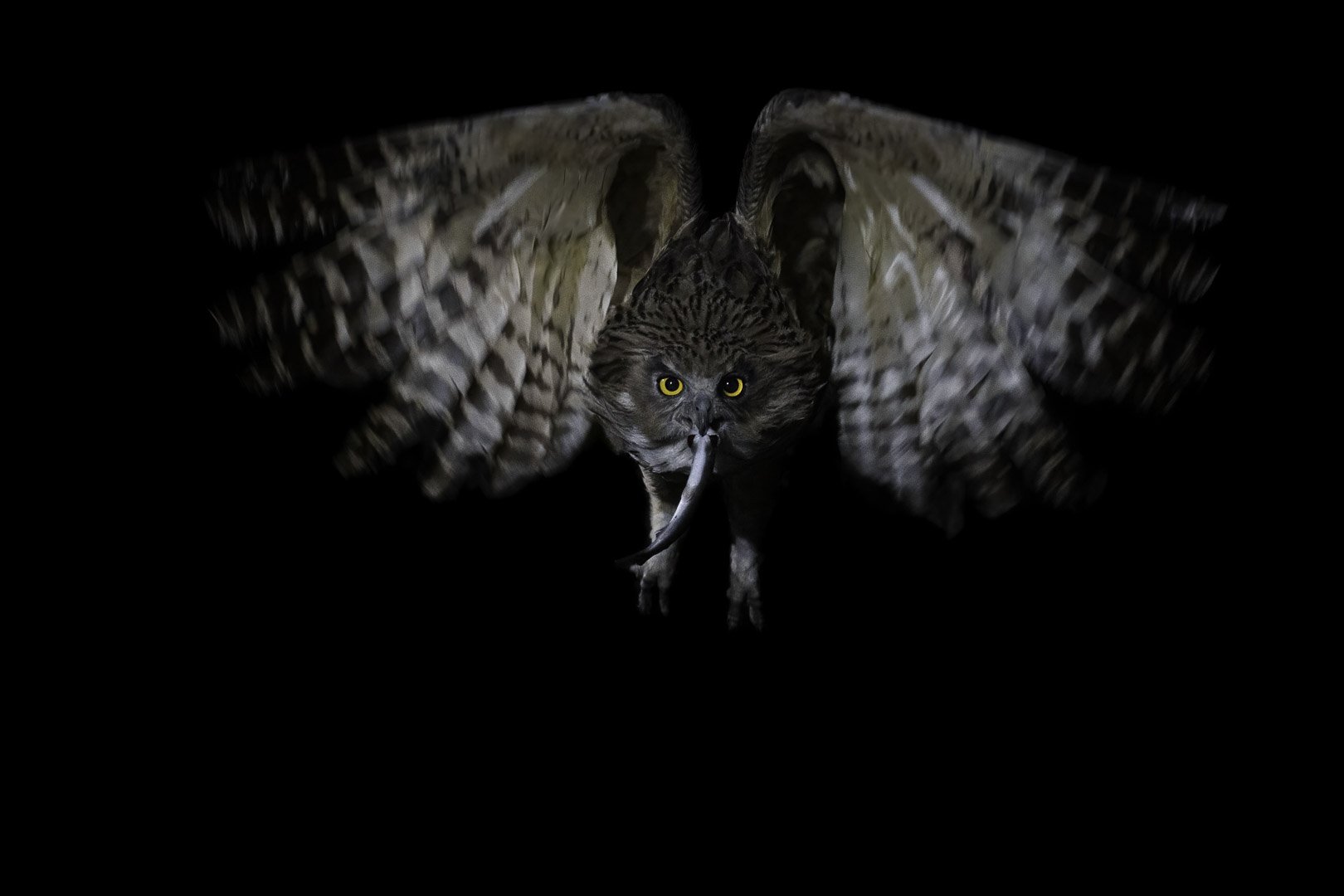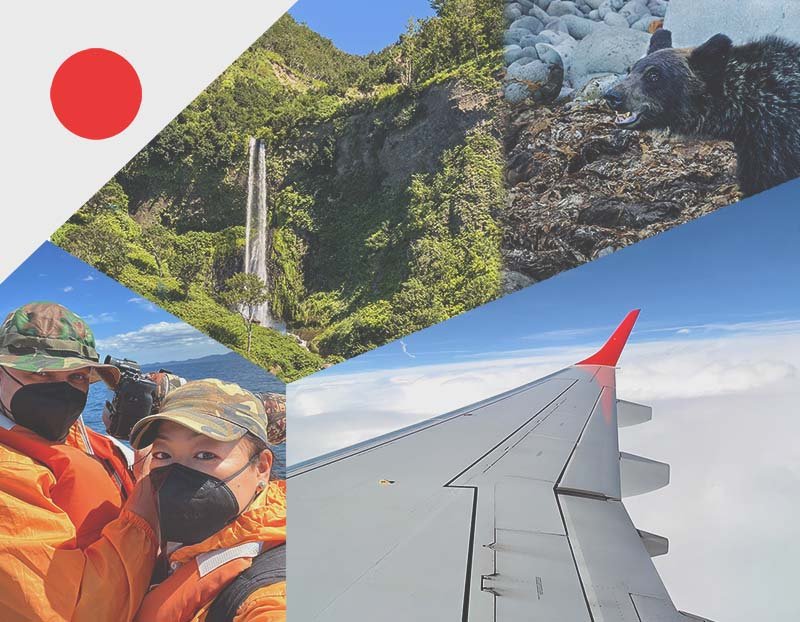Live Blog: Hokkaido Kushiro Japan
In our final leg of the journey, we take you to Hokkaido, a winter nature paradise. Here, we will encounter fascinating wildlife, including cranes, deer, flying squirrels, sea eagles, and many other impressive animals.
If you haven't followed the first weeks of our stay in Japan, you can catch up here:
From now on, I will be creating a lot of data in the form of pictures and videos, as I will be out with the camera all day. Therefore, I won't be able to include all the pictures in my live blog updates on the same day. But I will pick out a few for you from time to time.
January 6, 2024 - Manchurian Crane or Red-crowned crane (Grus japonensis)
Last night, we landed in Kushiro, a port city on the east coast of Hokkaido. After our arrival, we went straight to our first accommodation near our selected crane spots. The flight from Tokyo Haneda to Kushiro Airport took about 1 1/2 hours. From there, it was another 30 minutes to our accommodation. The weather conditions are not extreme currently, with daytime temperatures around 0 to 3 °C and evening to night temperatures around -5 °C. This is expected to change in the coming days, with daytime temperatures falling to around -4 °C and nighttime temperatures to -15°C. This will likely drop further in the coming weeks.
We began our day right after breakfast, focusing on the Manchurian Cranes (Grus japonensis). First, I concentrated on finding good positions to photograph and film these elegant birds over the next two days.
I envisioned four different types of photos that should stand out from my usual documentary pictures in this live blog. When time is limited, it's always questionable whether you can capture all the images you plan for. I have the same goal for the video material. Whether I succeed in capturing both photo and video in the same scene remains to be seen.
Here are the types of photos I want to achieve:
Portrait
Singing Crane Portrait
Long Exposure in Flight
Backlight at Sunrise
First Impressions and Challenges with the Manchurian Cranes
I started a few attempts in this direction today. One of the most difficult challenges was, and will be, having the right light. But isn't that always the case with our photography endeavors? 😜 Currently, the sun rises at 6:40 AM, and at our first spot, it appears over the mountain crest at around 7:20 AM. I checked this morning so I could better estimate the light for the coming days. The last sun rays disappear behind the next mountain at around 3:30 PM. The period of soft to harsh winter light is very short. The advantage is that the winter sunlight is not as harsh, or rather, it is only really intense for a short period between about 11 AM and 2 PM if the sky is clear.
During this time, one can enjoy delicious Japanese food.
Today, I used the following equipment:
Sony A1 + 1.4x TC & 2x TC + 400 mm f2.8
Sony a6700 + 100-400 mm f4.5/5.6 & 200-600 mm f5.6/6.3
Here are a few first impressions of the Manchurian Cranes (Grus japonensis).
There was also a Whooper Swan.
Whooper Swan (Cygnus cygnus)
January 7, 2024 — Manchurian Crane in Morning Light
Early Start to the Manchurian Cranes
The alarm clock rang at 5 AM, waking us from bed. Today we planned to visit a crane spot where I hoped to get some good backlight shots. According to the weather forecast, it was supposed to be sunny, and my check on Google Earth regarding where the sun would rise gave me hope that this place would be suitable for such shots. Afterward, we planned to visit another crane spot we hadn't known before.
Live sun tracking check in the Photopills app on-site
Live Sun Tracking Check in the Photopills App
When we went to the car, we saw it was cloudy. Still, we drove off, hoping the clouds would clear by 7:00 AM. Always think positive! At 5:45 AM, warmly dressed, armed with coffee in a thermos, and equipped with various camera gear, we set off. It had snowed again during the night, so the roads were quite snowy, and the outside temperature was -10 °C. The drive took about 30 minutes. When we arrived, the clouds had mostly cleared, except for a dark band of clouds on the horizon where the sun was supposed to rise. However, the chance was high that I could take my photo as soon as the sun rose above the cloud band. A pair of cranes were already on site, but otherwise, the large field was empty. Now we had to wait.
Gradually, small groups and families of cranes began to fly in. The light was initially not as hoped. The more cranes arrived, the smaller the chance of getting photos of individual or well-isolated groups. Throughout the day, several hundred Manchurian Cranes gather at this place, making it difficult to get such pictures.
At first, we were alone at this spot. After a while, another couple of photographers arrived, apparently with the same plan: to photograph the arriving cranes in the golden winter morning light.
Finally, the sun peeked over the last clouds on the horizon. The photos that resulted did not exactly have the lighting mood I had envisioned, but they came very close. I have developed a few for you to see.
Crane Family: Parents on the right, juvenile on the left after landing - Sony A1 + 1.4x TC + 400 mm f2.8
Equipment for the two pictures:
First picture: Sony a6700 + 200-600 mm f5.6/6.3
Second picture: Sony A1 + 1.4x TC + 400 mm f2.8
Equipment: Sony a6700 + 200 - 600 mm f5.6 / 6.3
At 8:30 AM, we decided to drive to the next Manchurian Crane spot. The sun was already higher, and we had what we had envisioned. To make the most of the remaining soft light at the other spot, we set off, which meant a 30-minute drive.
The drive took us through a mixed landscape of mountains and flatlands. The combination of these elements with the snow cover created a beautifully wintry atmosphere. Upon arrival, we found that this spot was very popular, as many photographers and birdwatchers were already there. We grabbed our equipment and tried our luck to get some good shots.
The spot made a very good impression at first glance. It was a large snow-covered field surrounded by natural forest strips. In the morning, it offered backlight, and in the evening, the sun would be at our backs—promising for photos with a special mood. Unfortunately, we realized we couldn't take advantage of this, as we would be leaving for our next adventure the next day. Still, I will include this spot in my planning for next time.
A Surprise Encounter
As we stood there, looking over the large number of Manchurian Cranes, my wife noticed a crane that was different from the others. Not because of its behavior, but because it wasn't a Manchurian Crane. It was a White-naped Crane (Antigone vipio), usually observed on the southern Japanese island of Kagoshima. This bird immediately caught my attention. After taking many photos of the Manchurian Cranes, this new crane species was a perfect new subject. The challenge was to isolate the bird for a portrait and manage the now harsher light.
I managed to get a few shots of the White-naped crane (Antigone vipio)
Equipment: Sony a6700 + 200 - 600 mm f5.6 / 6.3
Equipment for both pictures:
Sony a6700 + 200–600 mm f5.6 / 6.3
Visit to the Nature Center and Conclusion of the Photo Morning
The field where the cranes gathered belonged to a nature center. We decided to visit the center after our eventful photo morning. Before we left, we wanted to have lunch at a nice little restaurant. We were unsure about the center's opening hours, as we planned to return at 3 PM for the sunset.
Upon entering the nature center, a woman immediately approached us. She asked if she could help us. After clarifying the opening hours, we started talking. First, we discussed the White-naped Crane (Antigone vipio) we had spotted. Until then, we didn't know what species it was. We got the necessary information at the nature center. We also learned about a crane from Canada that had been sighted at our previous spot. This motivated us to return there later. The spot was near the restaurant where we planned to have lunch.
Our conversation with the nature center staff deepened. When they learned we lived in Germany, they told us they had formerly worked for BASF in Tokyo but had moved to Hokkaido with their husband. How small the world is: We had seen the lady and her husband the day before at dinner. They recognized us when we entered the nature center. We had a long chat about the lighting conditions at the crane spot at sunrise and sunset. A ranger joined us, giving us more tips on photo spots and explaining the local lighting conditions. In Japan, I always experience how friendly, factual, and helpful people are.
View while dining from the small restaurant at the songbird feeding station and cranes flying over the reeds.
After this enriching conversation, we drove to the small restaurant for lunch. It is located right next to a large reed belt where cranes occasionally fly low over the reeds. From a large window, you have a wonderful view. There is also a feeding station for songbirds in front of the window. While dining, you can observe many bird species: great tits, marsh tits, long-tailed tits, sparrows, woodpeckers, and jays. I had to photograph a jay through the window as it sat right in front of us, seemingly posing.
Eurasian jay (Garrulus glandarius) — Equipment: Sony a6700 + 200–600 mm f5.6 / 6.3
After a delicious meal, we returned to the spot where we started our day. We wanted to see if we could spot the Canadian crane species. And indeed, despite the high-standing sun and the resulting harsh light, I wanted to take a photo of the Sandhill Crane (Antigone canadensis). In the photo, I intended to highlight the difference between the Manchurian Crane and the Sandhill Crane. The focus should be on size and appearance, with the Sandhill Crane in the foreground. Thus, I set the focus on it in the photo. Here is the resulting photo:
Sandhill Crane (Antigone canadensis) & Red-crowned crane' (Grus japonensis) Equipment: Sony A1 + 2x TC + 400 mm f2.8
After this eventful morning, we returned to our accommodation for a midday rest. We planned to use the sunset at the crane spot with the White-naped Crane (Antigone vipio) for photography until 3 PM.
Manchurian Cranes and White-naped Crane in the Evening
You can plan as much as you want, but ultimately things turn out differently. Our midday rest was deeper than planned, and we overslept. By the time we got in the car, we were already 30 minutes late. It was clear that we could no longer use the sunset for the crane photoshoot. Still, we wanted to take the opportunity to photograph and observe the Manchurian Cranes and the White-naped Crane one last time before heading to our next adventure tomorrow.
Although I couldn't use the warm sunlight at sunset, I had the opportunity to take some long-exposure shots of the cranes taking off and flying.
Equipment: Sony A1 + 400 mm f2.8
Equipment for both pictures: Sony A1 + 400 mm f2.8
Finally, I was able to photograph the White-naped Crane one more time before a very eventful and beautiful day ended.
Tomorrow we continue with our photo adventures in Hokkaido.
Equipment: Sony A1 + 1.4x TC + 400 mm f2.8




































